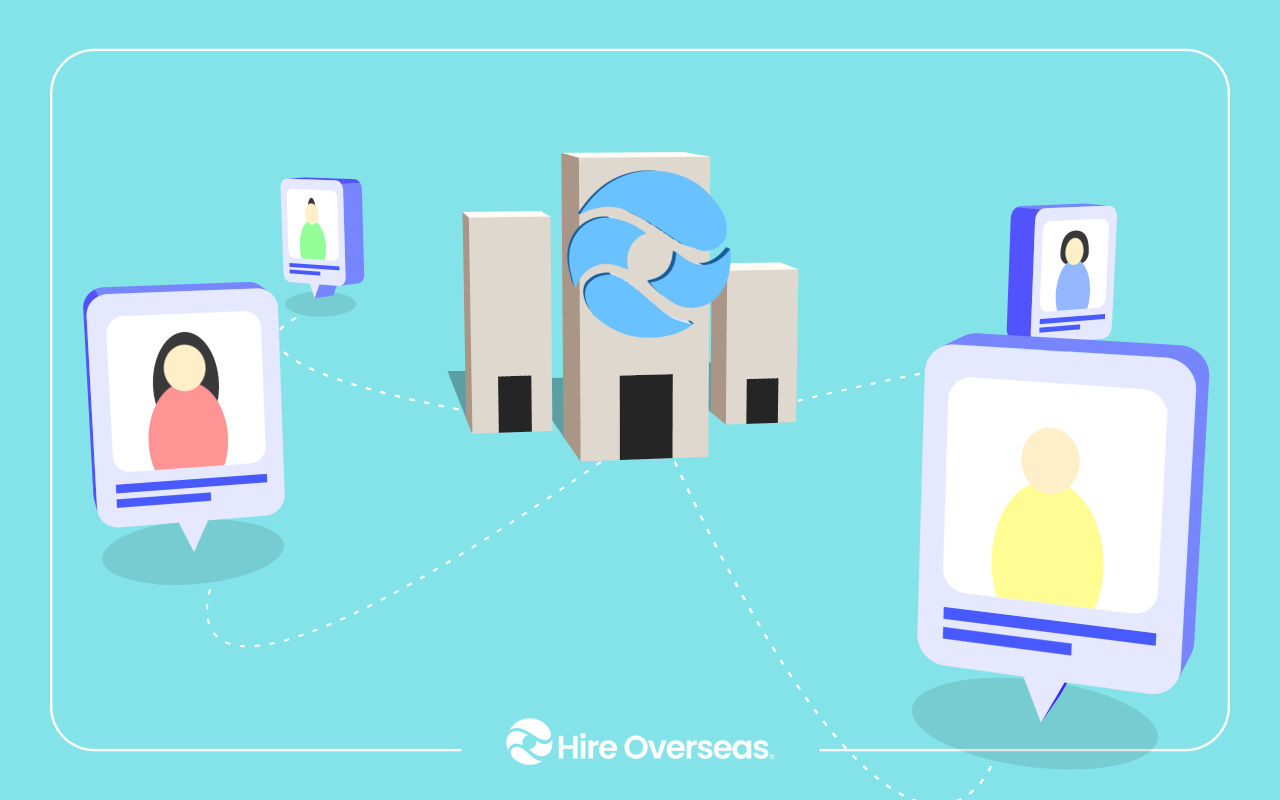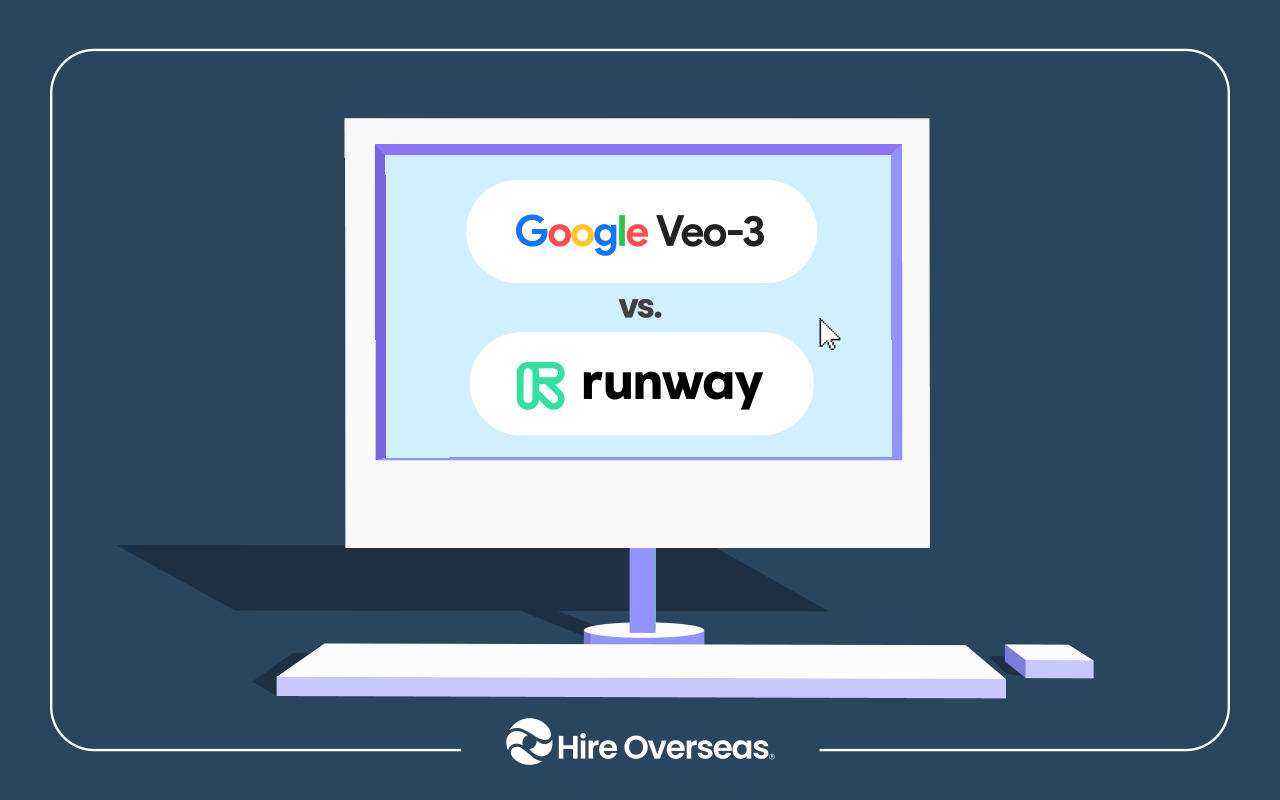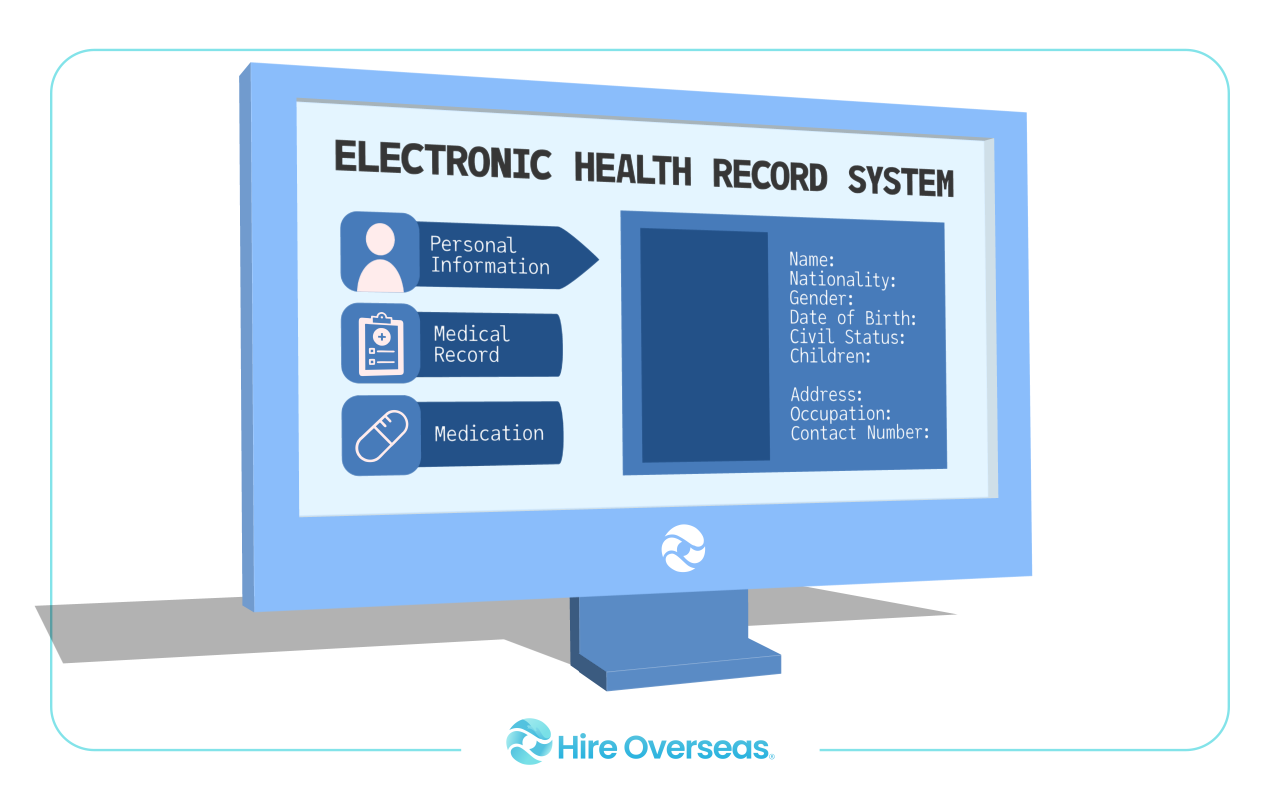Can AI Replace Outsourced Workers? Why the Future is Hybrid
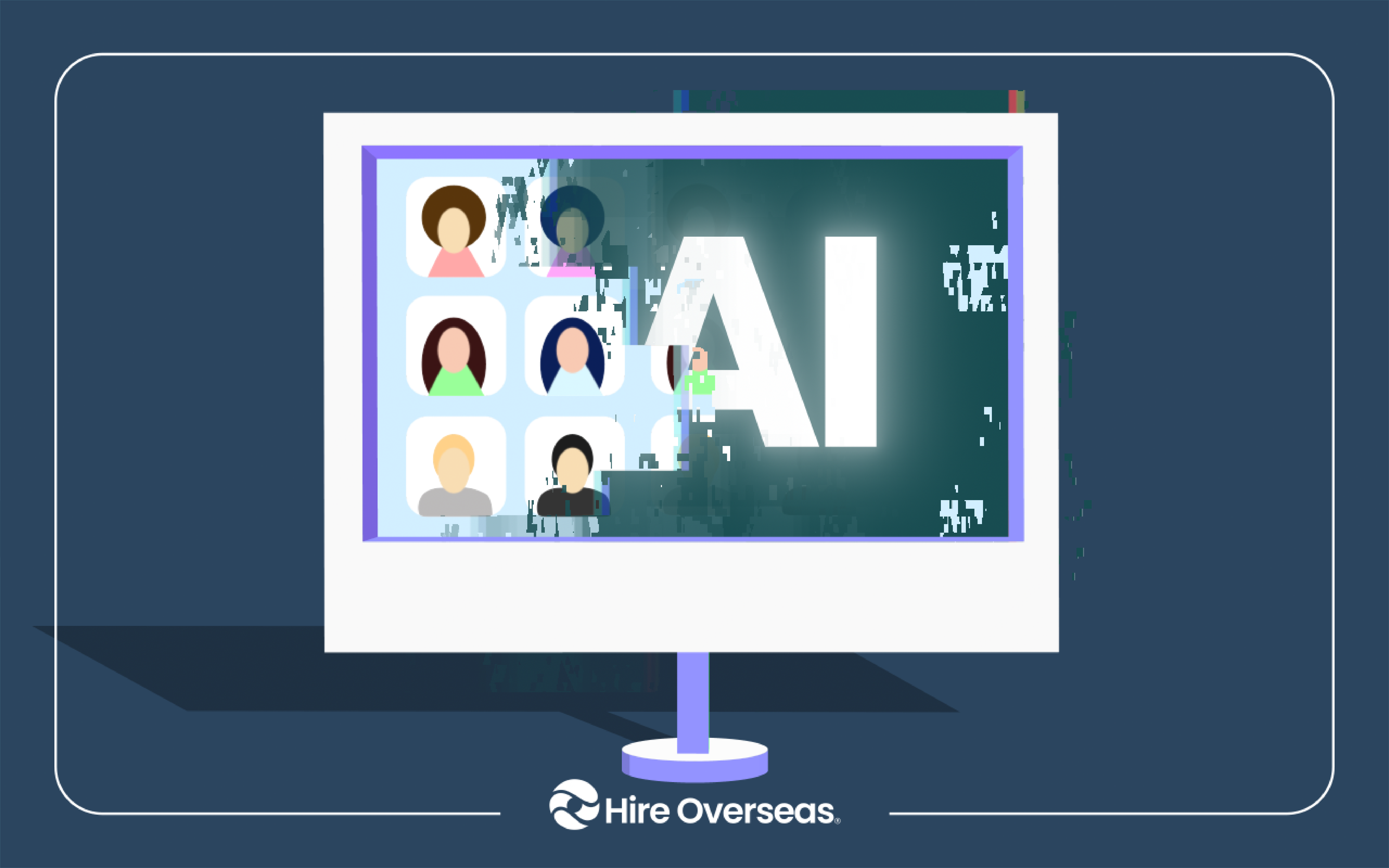
AI or Outsourcing? You’re Asking the Wrong Question
Whenever a new AI tool debuts, people inevitably ask, will it replace jobs? Lately, outsourced workers—virtual assistants, data entry, and customer support—feel especially vulnerable.
Their concern isn’t baseless. AI is faster, cheaper, and often impressive—but it struggles with nuance, unpredictability, and real-world messiness. Outsourced professionals excel at these, thanks to job expertise, cultural fluency, and sensitivity to subtleties.
So, AI isn’t about to replace outsourced talent. Leading companies don’t pit humans and machines against each other; they combine them. AI automates repetitive work, while people handle exceptions and critical thinking. The result: operations that are more efficient and distinctly human.
Choosing between AI and outsourcing misses the point. The future is hybrid—and smart businesses are already making it work.
Why Outsourcing Still Matters (Even in the Age of AI)

Let’s be clear: just because AI can do something doesn’t mean it should.
In customer support, chatbots handle basics, but when orders go missing or accounts get hacked, only a human who is calm, empathetic, and brand-aware can truly help. That’s not optional; it’s vital for retention. Outsourced teams in the Philippines or Eastern Europe excel in stress management and de-escalation. Empathy is a business asset.
And it’s not just support.
- Creative work: AI can draft a blog, but it can’t brainstorm a campaign that taps into cultural trends or local humor. Outsourced creatives—writers, designers, editors—bring human context AI can’t touch.
- Sales outreach: Tools like Apollo or Lemlist can scrape leads and automate cold emails. But outsourced SDRs? They research each prospect, personalize the angle, and follow up in ways AI just can’t replicate.
Here’s a stat that might surprise you:
Companies that leverage offshore talent report savings of up to 70% on staffing costs without sacrificing quality (Deloitte Global Outsourcing Survey, 2023).
Take Canva, for example. They scaled from startup to unicorn status while working with a blended global workforce. Their support and moderation team is mostly in the Philippines due to cultural alignment, English fluency, and low costs. This approach allowed their core team in Sydney to remain lean while still providing 24/7 support.
Today, outsourcing is not about making shortcuts. It’s about expanding capacity, adding agility, and buying time for your in-house team to focus on the high-leverage stuff.
Where AI Excels (and Where It Falls Short)
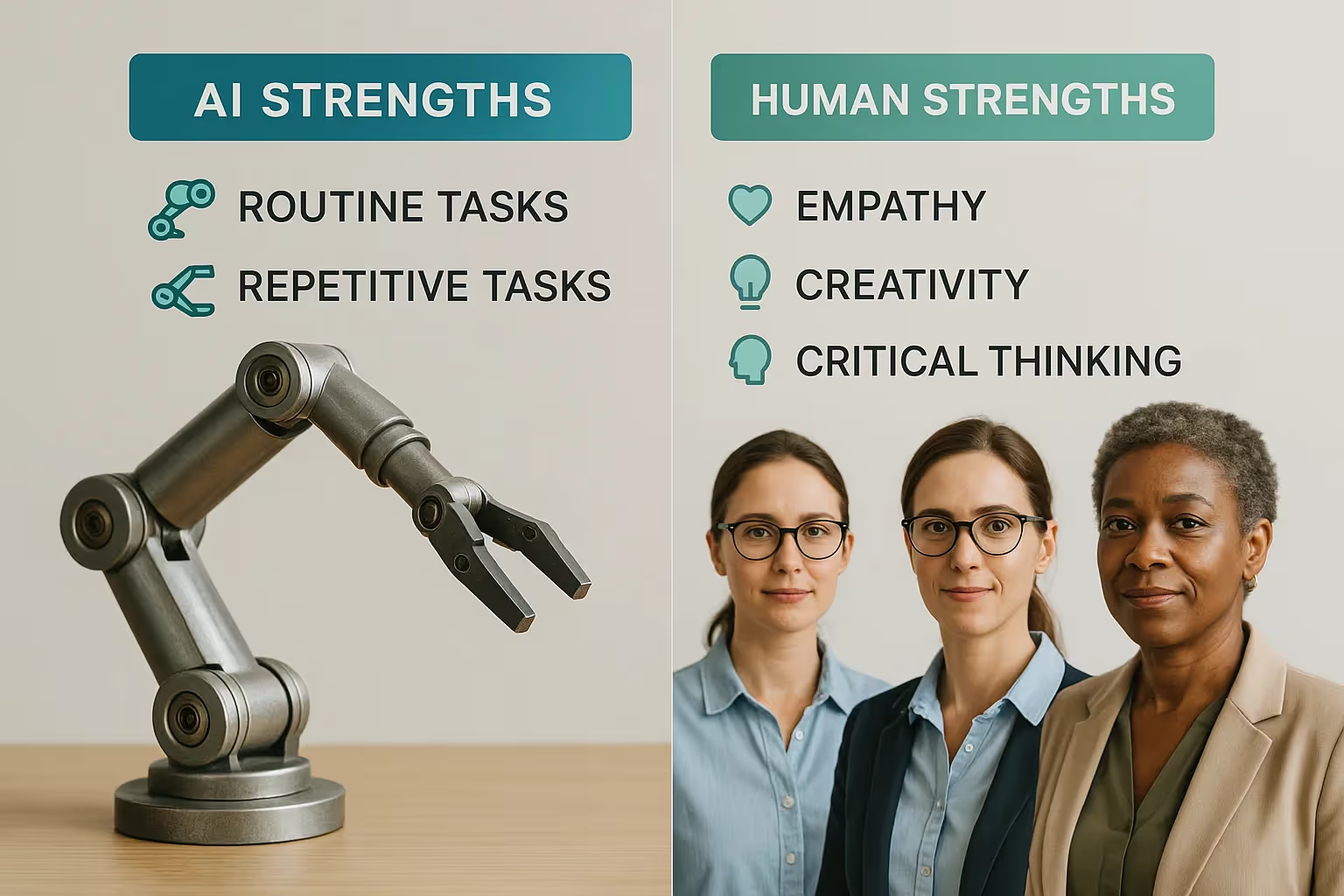
AI excels at what it’s designed for—routine, pattern recognition, and repetitive tasks but AI lacks intent and intuition. It can process tone without feeling, mimic creativity without life experience, and draft content without critical context. Like a calculator, AI is fast and precise, but it can’t solve problems it doesn’t understand.
Even top AIs like ChatGPT, Jasper, and Copy.ai require human prompts, editing, and strategic direction. AI can outline; only humans bring voice, story, and empathy. The ideal balance: let AI handle the heavy lifting, while humans focus on nuance and strategy.
Hybrid Teams: The Future of Smarter Business

In the modern workplace, hybrid teams that combine AI tools with outsourced human talent are emerging as a high-leverage model for efficiency. Businesses are realizing that AI can handle large workloads quickly, while skilled remote workers provide the context, creativity, and complex decision-making that machines cannot. The result is a smarter workforce where each side amplifies the other’s strengths.
For instance, AI chatbots operate 24/7 and can instantly handle repetitive or high-volume tasks, slashing support loads without adding headcount. IBM reports that virtual agents now resolve 60–80% of routine inquiries without human escalation, enabling round-the-clock service and cutting customer support costs by up to 30%. This implies that a bot can respond to common queries for a fraction of the cost (roughly $1 per query compared to $5–$12 for a human agent), allowing individuals to concentrate on higher-value issues.
As Ann Piccirillo of JDA TSG aptly put it, “While AI handles repetitive functions, human talent focuses on complex, strategic initiatives that drive innovation and create meaningful value.” In other words, AI’s speed and scale combined with human insight lets companies do more with less and do it better.
The combination of AI and outsourced talent results in a workforce that surpasses its individual contributions. The AI delivers unprecedented speed, volume, and consistency, while humans contribute adaptability, creativity, and critical thinking. Businesses that strike this balance correctly can boost productivity without sacrificing quality. They save money (by automating rote work and leveraging lower-cost remote experts) and move faster in execution. It’s a future-forward model where algorithms and human experts collaborate seamlessly, the AI doing the heavy lifting and humans driving the complex, high-touch work that truly moves the needle. Companies embracing these hybrid teams are already seeing faster turnaround times, lower costs, and improved outcomes across the board.
Real-World Example: Klarna’s AI-Boosted Support
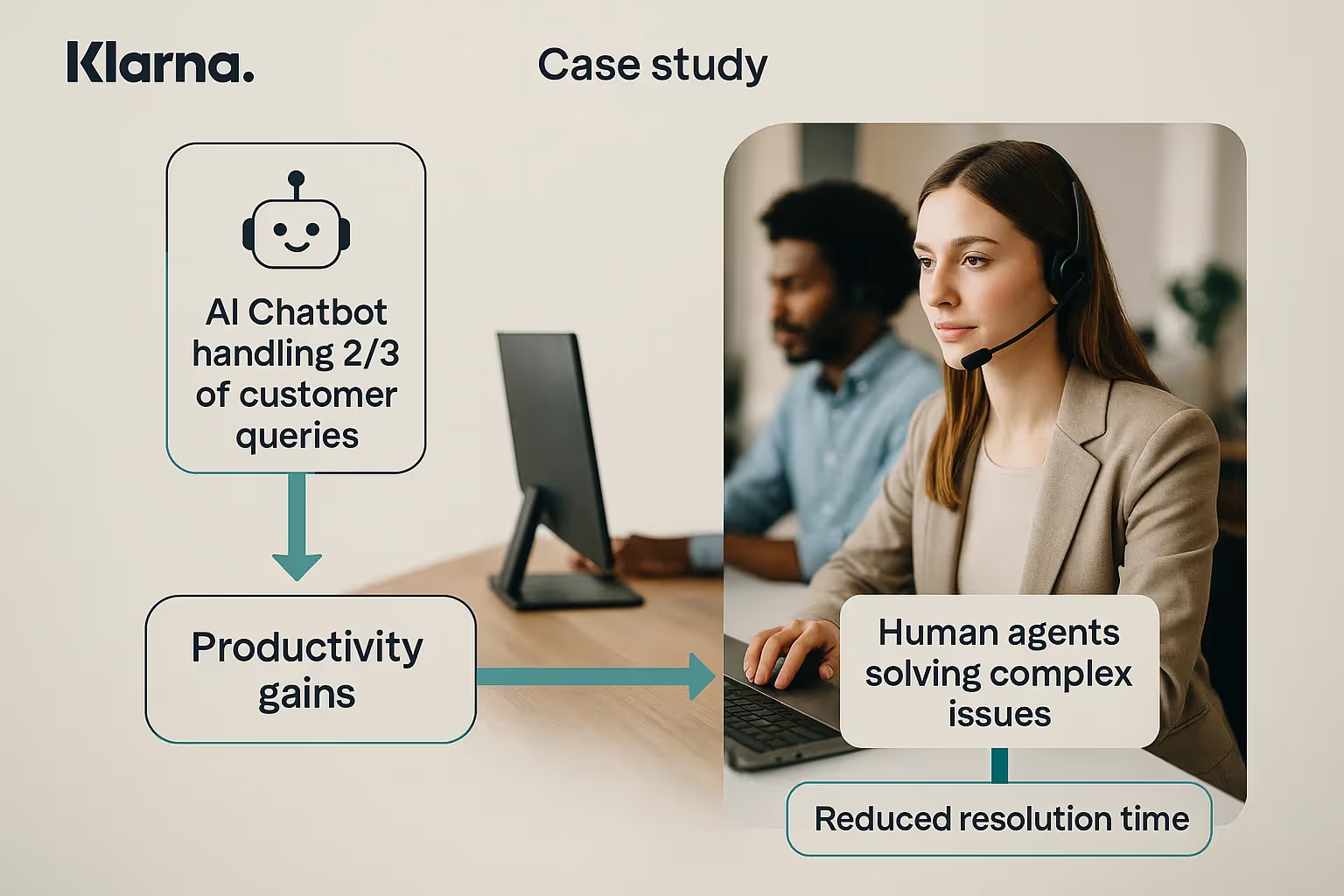
Klarna, a Swedish fintech company recognized for its "buy now, pay later" services, exemplifies this synergy in action. Facing rapid growth and high customer service demands, Klarna turned to artificial intelligence to scale its support operations efficiently. In early 2024, the company introduced an AI customer service assistant (developed in partnership with OpenAI) and integrated it with its customer support team. The results were transformational.
Before the Switch
In mid-2023, Klarna’s customer service load was crushing. Roughly 5,000 staff (many through outsourcing partners) fielded chats that averaged 11 minutes per case, and the fintech was still losing money.
Implementation
In 2024, Klarna plugged an OpenAI-powered assistant into the front of its support funnel. The bot now tackles two-thirds of incoming chats and does the work of about 700 agents, cutting average resolution time to two minutes. The headcount gently decreased to 3,800 due to attrition rather than layoffs, and the remaining human representatives focused on complex or emotional issues that AI could not address.
The Impact on the Bottom Line
Freed from routine queries, Klarna swung to an adjusted profit of 700 million Swedish kronor (~$66M) in the first half of 2024, versus a loss a year earlier. Revenue per employee jumped 73 percent as productivity soared.
Klarna did not choose between machines and people. They proved that combining AI with an outsourced human workforce delivers real business value: faster resolutions, lower costs, increased customer satisfaction, and higher team productivity. This case demonstrates that hybrid teams, with AI managing scale and people adding judgment and creativity, are the future of smart, scalable business. Companies adopting this model gain a competitive edge in efficiency and satisfaction, as Klarna’s results show—a blueprint any organization can follow in the AI-driven era.
Key Benefits of the Hybrid Model

24/7 productivity, zero yawns
AI never clocks out, and a support crew spread across time zones picks up tickets while your local team sleeps. Klarna’s AI assistant, for instance, now fields two-thirds of chats in 23 markets and 35+ languages, giving customers round-the-clock help without hiring extra shifts.
Lower costs, higher output
Alibaba saves about US $150 million every year by letting chatbots answer 75 percent of customer questions, and Vodafone’s “TOBi” slashed its cost-per-chat by 70 percent. The same service results in a smaller bill.
Sharper accuracy
JP Morgan’s COIN software reads contracts in seconds and removed 360,000 hours of manual legal work, while Klarna’s bot cuts repeat inquiries by 25 percent thanks to cleaner, error-free answers. Humans review the edge cases and sign off.
Happier customers
Vodafone saw first-contact resolution jump from 15 percent to 60 percent and its Net Promoter Score rise 14 points after pairing AI triage with live agents. Speed plus empathy equals loyalty.
Lower burnout
Sixty-five percent of knowledge workers say automation makes them less stressed, and Zendesk reports that AI suggestions trim agent workload by more than 15 percent. People maintain their sanity when bots handle the tedious tasks.
Elastic scale
Google leans on external vendors for IT support and admin tasks, while Facebook hires thousands of offshore moderators to expand (or shrink) teams as user traffic spikes. Flexible headcount, zero panic.
More time for innovation
Apple hands off assembly to Foxconn so its in-house talent can obsess over design, and 34 percent of executives say the hours saved by AI now go to “deep thinking and creating.” That’s a win for strategy.
How to Build Your Hybrid Workforce
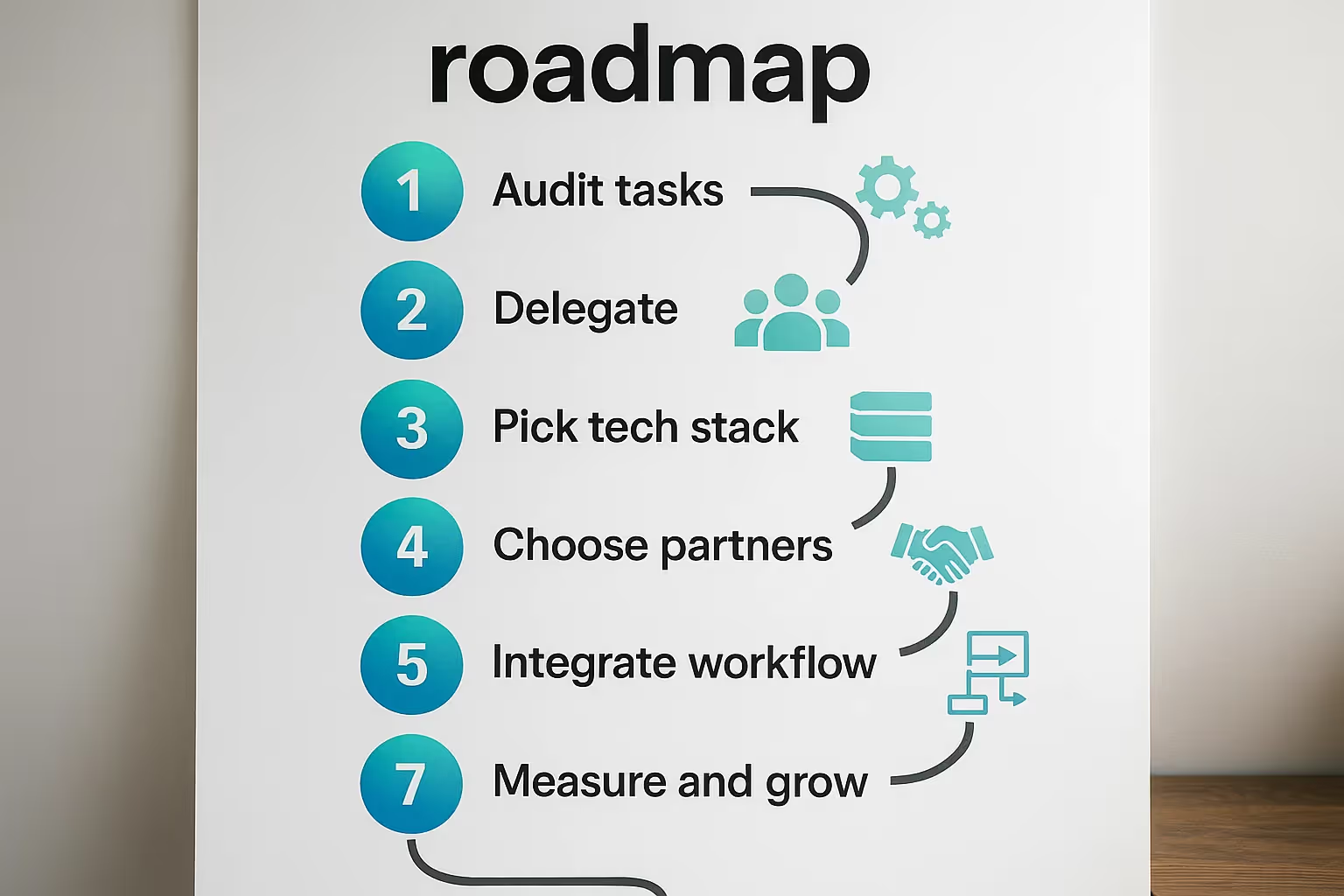
Spot the low-hanging tasks
Audit your workflows and tag everything that’s repetitive or rule-based. McKinsey says about half of today’s paid activities can already be automated, and 94 percent of staff still slog through manual chores every day. Those jobs go to the bots.
Decide what humans elsewhere should handle
Delegate non-core yet crucial tasks to experts beyond your premises. Slack did exactly that, outsourcing its beta build to MetaLab and hitting 15,000 users in two weeks.
Pick the right tech stack
Chatbots powered by IBM Watson can answer up to 80 percent of routine queries and trim support costs by roughly 30 percent. Company-wide, 70 percent of large firms now pilot automation in several functions, so proven tools abound.
Choose a talent partner you trust
Whether you tap a freelance platform, a BPO, or a specialist agency like HireOverseas, vet them for skills, security, and cultural fit. Clear KPIs and a small pilot project help you validate the match before you scale.
Wire humans and AI into the same workflow
Set up escalations so that any unanswered bot queries notify a live agent, utilize Slack or Teams channels for shared visibility, and connect everything using no-code bridges like Zapier. Zendesk’s built-in AI already hands tricky tickets to people automatically—copy that playbook.
Pilot, train, and roll out in phases
Launch in one team, gather feedback, refine, then expand. Even Slack’s own rollout advice is to “roll your tool out in phases” so users adapt smoothly.
Measure, tweak, and grow
Track metrics like response time, accuracy, and customer happiness. Klarna monitors these numbers constantly; that data proved its bot could replace the work of 700 agents without hurting satisfaction, guiding further scale-ups.
The Smartest Teams Aren’t Choosing Sides
The real question isn’t “AI or people,” but how to harness the strengths of both. The future of work is reinforcement, not replacement: AI delivers speed and precision; people offer empathy and creative insight. Together, they create a more agile, efficient workforce.
Hybrid teams are now the norm. The fastest-scaling companies combine AI for consistency and outsourced talent for nuance, achieving cost savings without sacrificing quality.
Ready to scale smarter with humans and AI working as one?
HireOverseas helps you build the human half of your hybrid dream team.
Unlock Global Talent with Ease
Hire Overseas streamlines your hiring process from start to finish, connecting you with top global talent.
